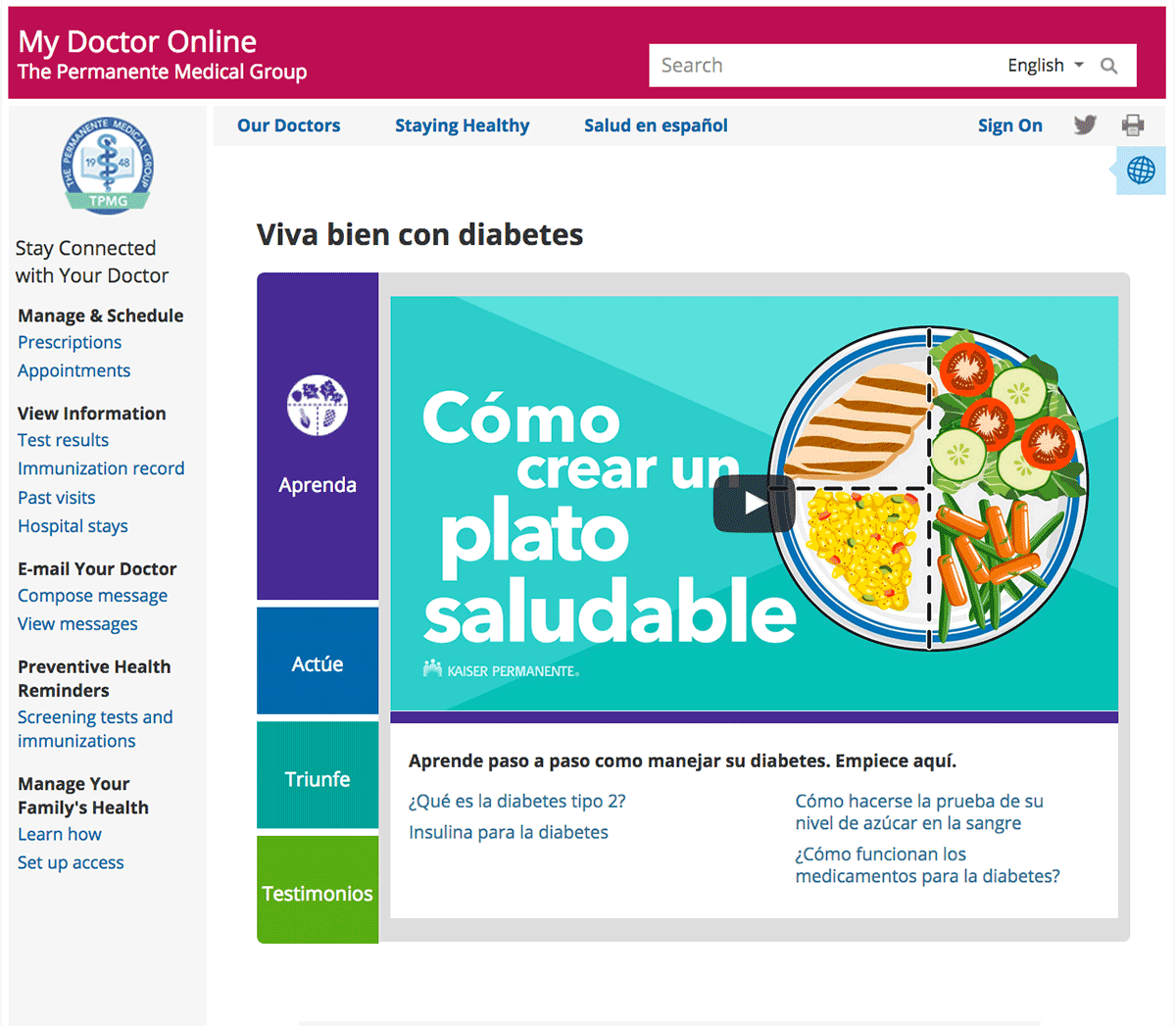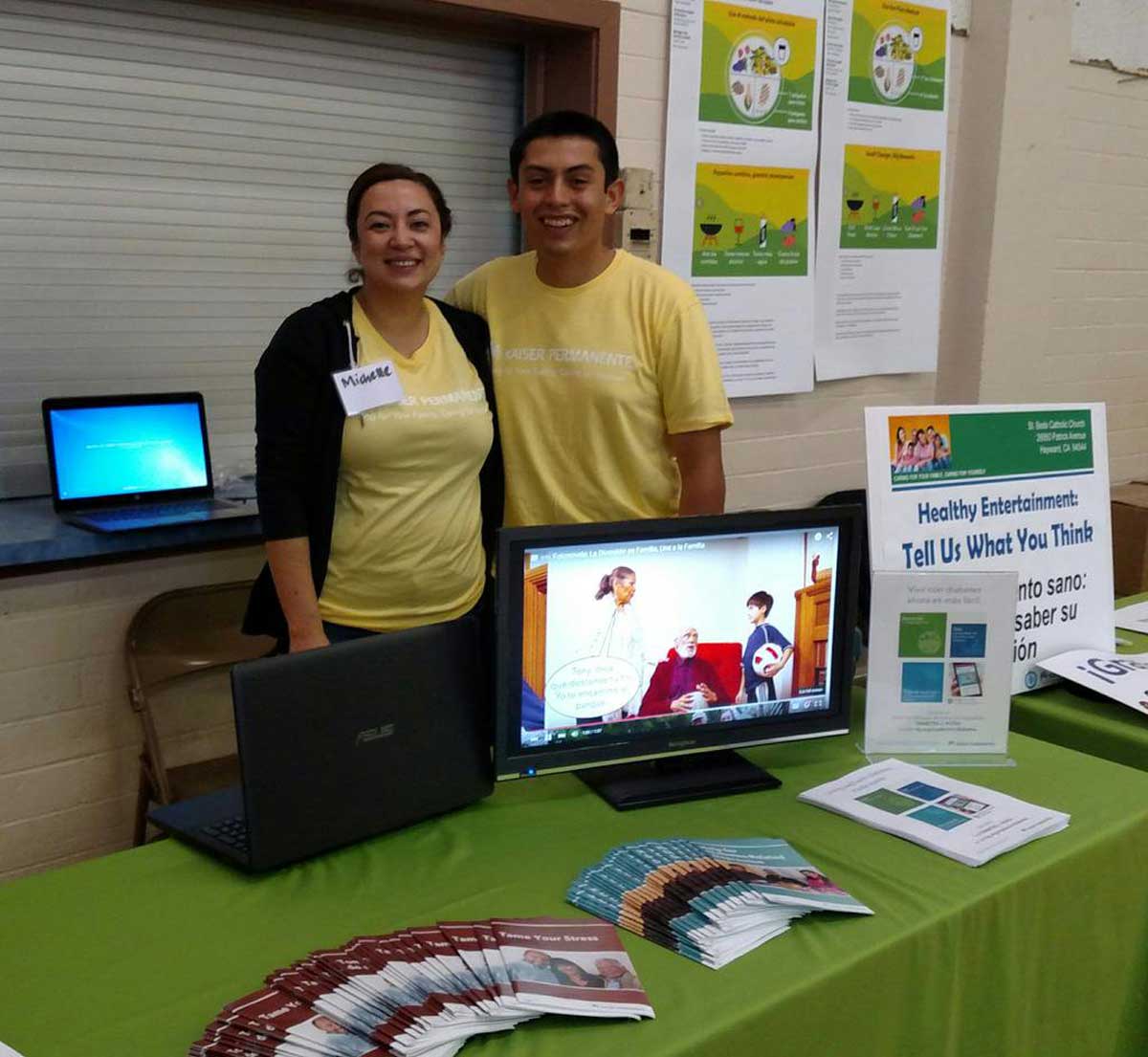
The diabetes section of My Doctor Online was intended to be a comprehensive resource for Spanish-speaking Kaiser Permanente patients. The information would inform patients about their diabetes care at KP in a culturally responsive way and provide them access to important clinical data.
This research project was intended to identify usability issues before launching the website. However, we ran into recruiting challenges that ended up providing valuable insight into our Spanish-speaking patient base.

Project Team
Goal of the Project
Outcomes
This was the first opportunity for the La Salud Permanente team (LSP) to gather direct patient feedback. The Diabetes section was far into the design phase when I joined the team. When meeting with the LSP team, their learning interests were as follows
Evaluate the overall usability of the product.
Determine whether patients understand how to access their A1C lab results.
Find whether patients could properly interpret their A1C lab results.
Given the product team was looking primarily for user testing feedback, I focused on working with clinical implementation teams to lay out scenarios for how patients might access and use this product.
Example
A doctor refers a patient to the website to view their A1C lab results after they have had a blood sugar analysis completed.
Due to HIPPA laws, we had to be mindful of our recruiting methods. We approached recruiting in two ways
Secure Messages via KP.org: Partnering clinicians would send a message to patients who had diabetes in their panels.
Health Education Classes: Spanish-speaking patients who went to classes about diabetes were invited to participate.
Unfortunately, we had a difficult time finding Spanish-speaking patients who had diabetes and used the internet.
“I’m sorry. None of my patients responded. Only 1 of the 17 secure messages sent were opened.” - Kaiser Permanente clinician.
Our recruiting struggles left me to adjust the needs of our research temporarily. We needed to get a better understanding of why were having a hard time reaching out to Spanish-speakers who had a KP.org account.
Secondary Research We found quantitative research about internet usage in the U.S for Spanish-speaking individuals. We also utilized existing Kaiser Permanente research to our benefit.
Patient Interviews at Community Health Fairs We decided to join three community health fairs organized by Kaiser Permanente to speak with patients directly. Our conversations were about internet usage in their daily lives, in particular at home.

Usability Study After giving more time to our initial recruiting methods and recruiting through the health fairs we were able to run our initial user testing.
Secondary Research
Community Outreach
User Testing